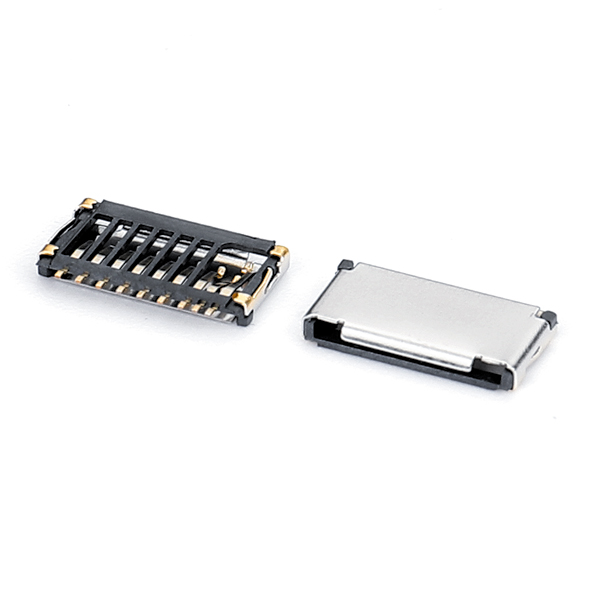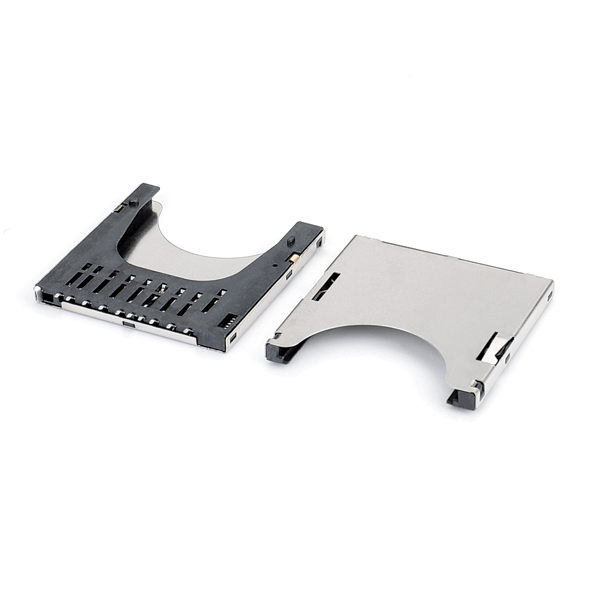Current status of the card socket connector market: Industry competition landscape in 2025
发布时间:2025-07-03作者:Shenzhen BBJ technology co., LTD点击:277
Current status of the card socket connector market: Industry competition landscape in 2025
As an important component for realizing modularization, electrical connection and information interaction in electronic equipment, card socket connectors are widely used in mobile terminals, consumer electronics, automotive electronics, industrial control equipment and other fields. With the development of industries such as 5G communications, the Internet of Things, and smart hardware, the card socket connector market in 2025 showed a clear trend of competition upgrading, and the industry landscape is also quietly changing.
The current status of the card socket connector market shows that the global market size continues to expand. According to authoritative industry data forecasts, the global card socket connector market is expected to exceed US$5 billion in 2025, with an annual compound growth rate of about 6%. Among them, the sub-products mainly composed of SIM card holders, TF card holders, SD card holders, and Nano SIM card holders still dominate, and the application scenarios are extending from the traditional mobile phone field to smart wearable devices, vehicle systems, industrial control boards, etc.
The competitive landscape of the card socket connector industry in 2025 presents the following major characteristics:
1. Increased brand concentration
As downstream customers have higher requirements for product quality, delivery response and technical support, market share has begun to concentrate on leading manufacturers with R&D capabilities and automated manufacturing capabilities. International giants such as Kyocera, Molex, TE, and Amphenol of Japan dominate the high-end market, while domestic companies such as Luxshare and Bubujing rely on price advantages and quick response to expand rapidly in the mid- and low-end markets.
2. Intensified competition for differentiated products
In 2025, the card connector will not only compete with general specifications, but also emphasize customization capabilities and application adaptability. For example, the car SIM card holder must have characteristics such as shock resistance, high temperature resistance, and long plug-in life; the industrial TF card holder pays more attention to dustproof, waterproof, and corrosion resistance. Therefore, manufacturers have launched technological innovations around product reliability design, miniaturization trends, and intelligent assembly adaptation.
3. Strengthening trend of domestic substitution

Driven by Sino-US trade relations and supply chain security needs, more and more domestic terminal manufacturers tend to adopt domestic card connectors, especially in the fields of consumer electronics and wearable devices. In 2025, the technical level and quality control capabilities of domestic brands have reached the international upper-middle level, and import substitution has been achieved in some fields such as mobile phone TF card holders and industrial SD card holders.
4. Smart manufacturing and supply chain integration become the key to competition
The card socket connector is a typical "multi-category, small batch, customized" component product. In 2025, industry-leading companies generally improve delivery and quality stability through MES systems, automated production lines and flexible mold management. At the same time, through the integration of upstream and downstream supply chains, improving risk resistance and rapid response capabilities have become the core of corporate competition.
5. Emerging application scenarios drive market growth
Emerging applications such as 5G modules, Internet of Vehicles TBOX, and smart meter reading equipment have put forward new demands for card socket connectors. For example, embedded eSIM is gradually becoming popular, but many industrial and automotive projects still retain physical SIM backup channels, which promotes the rapid growth of new connectors such as dual card sockets, hidden card sockets, and small card sockets.

Overall, the card socket connector market structure in 2025 has evolved from extensive competition dominated by price to refined competition guided by quality, delivery, service and customization capabilities. In the next three years, whoever can take the lead in forming a system advantage in "high reliability + high efficiency + high integration" will be more likely to take the initiative in the next round of industrial iteration.